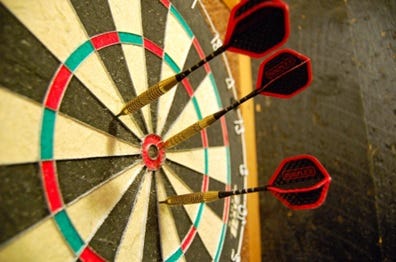How PHRF Base Ratings are Adjusted
a brief description of how different regions adjust ratings
How PHRF Base Ratings are Adjusted
There are over 40 PHRF regions in the United States. US Sailing, as the Governing body has no established system to adjust Base Ratings. Adjustments are arrived at through either calculation or estimation. No two regions are the same, unless they are administered by one Committee, like ECSA and ELI. The complexity of each regions adjustments were arrived at over a period of time and reflect the level of competition and size of fleets in that area.
Some of the data required for rating adjustments are based of standard measurements of the boat’s standard rigging and sails. These constants are:
I Dimension measured from the sheer line at the mast to the maximum hoist of the jib/genoa.
J Distance from the forward side of the mast to the intersection of the headstay and deck.
P Mainsail luff length from the top of the boom to the bottom of the upper mast band. If no band, to the top of the main halyard sheave.
E Foot length of the mainsail from the aft face of the mast to the inboard edge of the band boom. If no black band, to the clew in its most outboard position.
ISP Distance from the sheer line at the mast to the maximum hoist of the spinnaker.
SPL Spinnaker/whisker pole length is measured from the center line of the mast (fore side) to the extreme outboard end of the fitting with the spinnaker/whisker pole in its mast fitting and set in a horizontal, athwartship position
JC/STL/TPS On boats with asymmetrical spinnaker tacked forward of the headstay (anchor roller, bowsprit or similar) distance from the headstay/deck intersection forward to the tack location for the spinnaker, added to the J dimension. On boats with articulating bowsprits this measurement should be with the sprit parallel with the fore/aft centerline of the boat.
DISP (Displacement) Weight of water displaced by vessel without crew, water, fuel or stores. If unmeasured use the brochure/published value.
Draft Maximum depth of vessel measured without crew, water, fuel or stores. If un-measured use the brochure/published dimension. For centerboard yachts, report "board up" drafts.
These measurements are used to determine sail areas and to determine maximum limits. Most Sail Areas are calculated using basic geometry formulas for Area of a Triangle i.e.:
Main Sail Area = (P x E)/2
100% Fore Triangle Sail Area = (I x J) /2
Other Area calculations can come from Measured Rule (ORR, ORC, IRC, etc) or, some regions have developed their own formula. PHRF NW is one example:
STD Jib Area = 0.775(I)(J)
STD Spinnaker Area = (0.83) (ISP)(1.80)(JC) = 1.494(ISP)(JC)
STD Mainsail Area = 0.59(P)(E)
STD Average Headsail Area = 1.015(I)(J) = 2/3(STD Jib SA) + 1/3(STD Spin SA)
This data is then used to set base levels of each type of sail. Adjustments to the Base Rating are then derived from tables created by the Committees. These tables reflect, for the most part, a linear graph. This represents a significant difference between PHRF and Measurement Rules which use VPP, because PHRF adjustments cannot account for changes in wind speed or course configuration.
These represent adjustments based on changes to sail area.
Changes to the hull and appendages and their associated adjustments represents a more subjective methodology rather than objective. It is comparatively more subjective because PHRF does not use any criteria to determine how the hull and appendages work in concert with each other. As an example, changes to Draft effects upwind performance and stability as well as adding wetted surface. This is a complex interaction and most PHRF regions will adjust changes to draft with a simple table.
Other changes, such as Displacement or Ballast (Water, Internal, etc.), appendage foil shape are treated in a similar manner. Adjustments to these changes can be in the form of tables or a consensus of the Committee.
The tables across most regions for adjustments of genoa size are similar. While these are linear tables, for the most part they seem to be good approximations of performance gain and loss.


